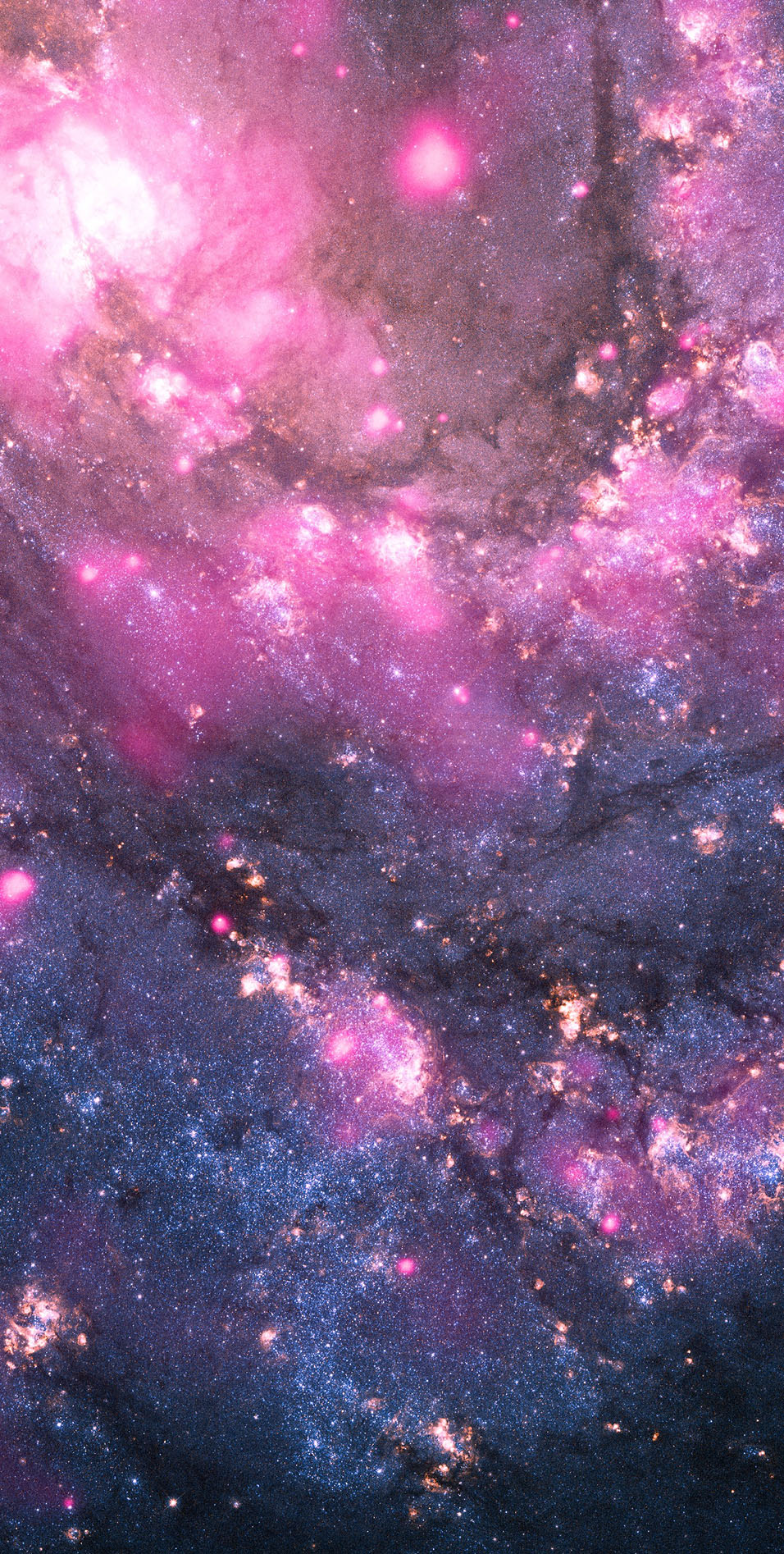Added 1 new A* page:
image by X-ray: NASA/CXC/Curtin University/R. Soria et al., Optical: NASA/STScI/ Middlebury College/F. Winkler et al. (source)
^ That's a section of galaxy M83 in a composite image of Chandra X-ray and optical data. The large, deep pink spot at the top middle is a new ultraluminous X-ray source, or "ULX"; these are objects that give off more gamma ray radiation than typical binary systems, or "as much energy in X-rays as a million suns radiate at all wavelengths." In the case of the most powerful ULXs, the suggestion is that one of the binary partners is a very large black hole, on the order of 40 to 100 solar masses; the largest known stellar mass black hole in our galaxy, by comparison, is more like 15 solar masses.
But there are a few even more unusual things about this particular ULX. One is its high variability: "the source had increased in X-ray brightness by at least 3,000 times [between 2000 and 2010] and has since become the brightest X-ray source in M83," says NASA. The other is the age of its stellar companion, which is thought to be a red giant, about 500 million years old; in a binary system, the two bodies are usually about the same age, having formed from the same source, so the implication is that this black hole is about 500 million years old. Other ULXs before this one had hot, bright young blue stars for companions, so this is the first time astronomers have seen evidence for a large stellar mass black hole this old.
This suggests that there could be many more old black holes drifting around, which I suppose most astronomers would predict--given that very large stars almost invariably form black holes at the end of their relatively brief lives, in theory--but they're usually darned hard to spot, so they got a bit lucky that they were looking when this one started eating some material and sending out X-rays (and that its jet was pointing directly at us, of course). I tend to think that once a good way of detecting the quiet black holes is hit upon, we'll find that there are oodles and oodles of them, young and old, pretty much everywhere stars have been.
|
